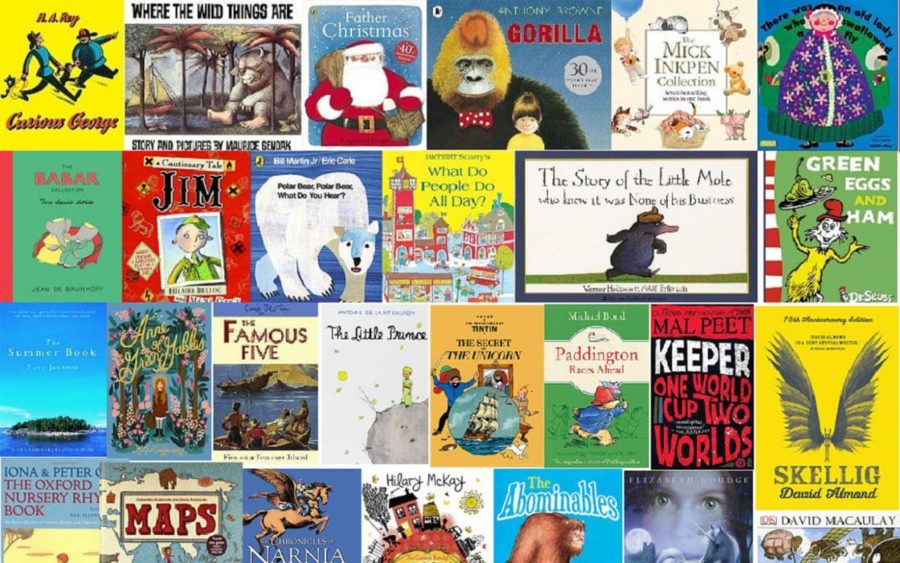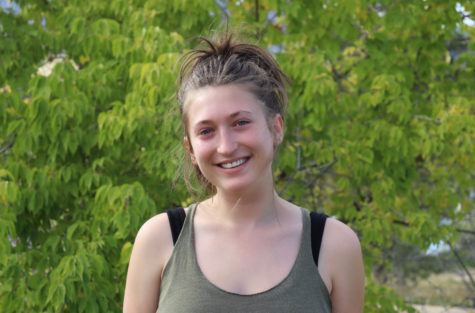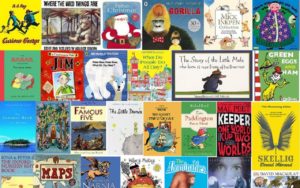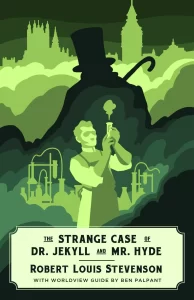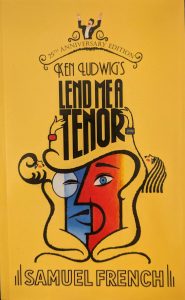The Innocence of Children’s Books is a Lie
A collage of the covers of famous childrens’ books, side by side.
March 4, 2022
When we think of children’s books, we think of innocence and happiness. Sitting down to read a book as a child was always so exciting, but sometimes the books we loved as children didn’t have the best morals. Keeping children’s books lighthearted is important, but we have to keep them real as well. Since these books shape people’s lives, it is important to discuss their inherent problems and what isn’t so great about them. Books can instill harmful ideas in children if not addressed properly.
Popular children’s book authors like Roald Dahl and Dr. Seuss have a vast collection of stories that are politically problematic, and even though morals are supposed to teach kids to act differently, sometimes they are taken too far.
I have compiled a list of some of my favorite children’s books and given a brief description of what is so troublesome about them.
James and The Giant Peach by Roald Dahl
James and The Giant Peach, the story of a young boy named James who one day is offered a strange seed. This leads to a massive peach growing by his house. The story then consists of James meeting lots of interesting characters, and going on wild adventures from inside the peach. This was Roald Dahl’s first children’s book, and it left many adults disturbed with its use of racism and morbid depictions of death. The grasshopper, a character that some children saw as unproblematic, once said, “I’d rather be fried alive and eaten by a Mexican.” The book wasn’t banned due to this racist quote, although it was banned in a few places, because it depicted a spider licking her lips. I don’t think that is a big deal, and I definitely don’t think it should have been taken as sexual… but it was. Despite people’s perceptions of the book, it speaks for itself by being so widely talked about, and the main reason it continued to be published was that children love it for its humor and illustrations.
Charlie and the Chocolate Factory by Roald Dahl
A Roald Dahl book that almost everyone knows is Charlie and the Chocolate Factory. The sweet idea of a golden ticket found in a chocolate bar that could lead to instant wealth if you play your cards right, and a candy factory full of whatever your stomach desires, captures the eyes of young readers.
Though I love this story just as much as the next person, it has very clear issues. The most commonly talked about problem is the Oompa Loompas, who were originally depicted as small black pygmies with warlike cries. As a kid, I had no idea what this was talking about, and I took it as a lighthearted description of fictional characters — however, I was very sad when I found out the truth. This can be harmful to children because it imparts racist caricatures that might stick with them as they grow up.
Curious George by H. A. Rey and Margaret Rey
Honestly, this was never my book. I was never entertained by a monkey being forced into a domesticated society, and following its antics. I know that’s a lot for a child to think about, but that’s who I was: a kid who cared more about animals than anyone else. Another questionable part of the book was that a white man (the Man with the Yellow Hat) captured a monkey (George) from Africa and brought him to the zoo (putting him in captivity). That may seem extreme, and it could be said that people are just looking for a problem, but considering the book was published in 1941, it isn’t unrealistic that it was made with this intent. I also don’t understand why the man wasn’t given a name, considering the fact that kids latch onto characteristics such as names.
Goldilocks and the Three Bears by Robert Southey
Though the story of Goldilocks and the Three Bears has a good moral and its intent is fun, Goldilocks breaks into the bears’ house and is unhappy with what’s available to her. Yet, she is still the heroine of the story. That is my biggest concern. In many stories, the author proves a point, and you end up developing new feelings for a character that did bad things but learned a lesson in the end. I don’t think Goldilocks learned from her actions, but kids still love her.
Beauty and the Beast originally by Gabrielle-Suzanne de Villeneuve
I will ignore the aspect of an animal and a human falling in love to continue the premise of the story. Belle is considered a hero (rightfully so), but the Beast is the problematic aspect of the story. For him to turn back into a gentleman, he needs a beautiful girl to fall in love with him… why? It seems simple and “true love can cure-all,” but Belle was literally locked in his castle, and somehow it’s her job to save all the objects and the Beast. No. It always falls on the woman, especially in stories Disney has “modernized.”
Pinocchio by Carlo Collodi
Most people don’t know the original story, which makes sense… I mean why would anyone want to share it in its horrific glory… besides me? I would make a list of the most violent parts of the story, but for your sanity, I will describe it in more detail. When Pinocchio refuses to listen to Jiminy Cricket’s advice, the talking bug scolds Pinocchio, leading him into a violent rage where he kills Jiminy with a mallet. Shortly after that encounter, Pinocchio goes up to a man’s house and begs for bread. In an effort to rid Pinocchio, the man pours water all over him. Later that night, Pinocchio falls asleep with his feet drying on a heater, this causes Pinocchio’s feet to burn off. Those two events are only 14 pages into the story. One of the things Pinocchio did that completely shocked me was when he tells people that Gepetto is abusing him (landing Gepetto in jail). The most horrific part of this story is when Pinocchio was hanged by the townspeople, but in order for the story to continue, the Blue Bairy is created to save him.
Six of Dr. Seuss’s books are not being published anymore due to their racial stereotypes and overt racism. Many readers are grappling with this because Dr. Seuss’s caricatures and stories held a big place in their hearts as children. Most people know exactly who Dr. Seuss is when they hear his name, so it is no surprise that people were shocked that some of his books were actually pulled from the shelves. Books publications are rarely halted, especially if they are so widespread.
If I Ran the Zoo by Dr. Seuss
The main concern with this book is how it portrays African and Chinese characters. The problem lies in African characters with grass skirts and Chinese characters having “slanted” eyes. Even though these characters’ races are never fully disclosed, it is implied, and incredibly insensitive, especially considering the story is related to a zoo.
And To Think That I Saw It on Mulberry Street by Dr. Seuss
With And to Think That I Saw It on Mulberry Street being Dr. Seuss’s first children’s book, many readers are disappointed that its publication has been stopped. There is a good reason for this, considering the book uses multiple Chinese stereotypes.
Madeline by Ludwig Bemelmans
Growing up, Madeline was one of my favorite books. I don’t know exactly why this is; maybe it was the drawings or how free Madeline acted, but I was obsessed with it. I am startled, looking back at all the things I missed. One thing I can’t wrap my head around is how Pepito had a guillotine in his backyard and would behead chickens. How did I justify or make sense of that as a child? Besides the obvious examples of animal abuse and murder, Madeline has many racist undertones.
Madeline and The Gypsies by Ludwig Bemelmans
I would say the most racist book in the Madeline series is Madeline and The Gypsies. A bit of real-world connotation before I dive into the book: there is a type of test called “implicit association tests,” and when Harvard did one asking test-takers to sort black and white faces into a category of good or bad, most Americans favored the white people. The idea of this test is to only judge based on first instinct, and it shows that racism is deeply ingrained in our society, whether you want to believe it or not. That may seem completely separate from Madeline, but throughout all the books they look at good vs bad.


